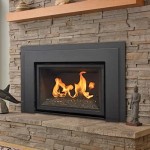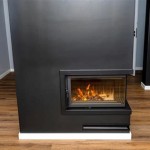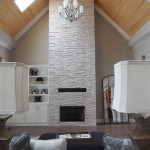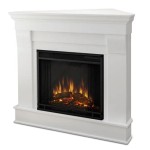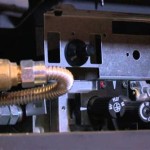Fireplace Decorative Screens: Functionality and Aesthetic Enhancement
Fireplace decorative screens serve a dual purpose: enhancing the visual appeal of a fireplace and providing essential safety features. They act as a barrier, preventing sparks and embers from escaping the firebox and potentially causing damage or injury. Furthermore, they offer a canvas for artistic expression, complementing the overall décor of a room and transforming a utilitarian feature into a focal point.
The use of fireplace screens dates back centuries, with early iterations often crafted from simple metal grates. Over time, designs evolved to encompass a wide range of materials, styles, and functionalities. The evolution of fireplace screens reflects broader trends in interior design and technological advancements in materials processing.
Selecting the appropriate fireplace screen requires careful consideration of various factors, including fireplace dimensions, aesthetic preferences, safety requirements, and budget. Understanding the different types of screens available, their respective advantages, and potential drawbacks is crucial for making an informed decision.
Types of Fireplace Screens
A diverse array of fireplace screens exists, each offering distinct characteristics and suitability for specific applications. Some of the most common types include single-panel screens, multi-panel screens, spark guards, and glass door fireplace screens. The choice depends on the firebox opening size and intended functionality.
Single-Panel Screens: These screens consist of a single, usually rectangular, panel that covers the fireplace opening. They are typically constructed from metal mesh and often feature decorative elements such as scrolls, patterns, or medallions. Single-panel screens are generally a cost-effective option suitable for smaller fireplaces with relatively straightforward designs. They offer basic spark protection and a degree of aesthetic enhancement.
Multi-Panel Screens: Multi-panel screens consist of two or more hinged panels that allow for greater flexibility in accommodating fireplaces of varying sizes and shapes. The hinged design also provides easier access to the firebox for tending to the fire. These screens often incorporate ornate designs and can be adjusted to fit snugly against the fireplace opening, providing enhanced spark protection and visual appeal. They are suitable for larger or irregularly shaped fireplaces where a single-panel screen might not provide adequate coverage.
Spark Guards: Spark guards are specifically designed to prevent sparks and embers from escaping the fireplace. They are typically constructed from a fine metal mesh that effectively contains airborne debris. While spark guards often prioritize functionality over aesthetics, many models incorporate decorative frames or accents to enhance their visual appeal. These are often positioned closer to the fire, and are designed for greater heat resistance. They are an essential safety feature, particularly in homes with young children or pets.
Glass Door Fireplace Screens: Glass door fireplace screens offer the most comprehensive level of protection and insulation. These screens feature tempered glass doors that enclose the fireplace opening, preventing sparks, embers, and drafts from entering the room. Glass door screens also improve the energy efficiency of the fireplace by reducing heat loss when the fireplace is not in use. While they can be more expensive than other types of screens, they offer significant benefits in terms of safety, energy savings, and aesthetic appeal. They can also be easier to clean than mesh screens.
Materials and Construction
The materials used in the construction of fireplace screens play a significant role in their durability, safety, and aesthetic appeal. Common materials include steel, wrought iron, brass, and stainless steel. The choice of material often depends on the desired style, budget, and level of heat resistance.
Steel: Steel is a strong and durable material that is often used in the construction of fireplace screens. It provides excellent heat resistance and can be easily shaped into a variety of designs. Steel screens are typically coated with a powder coating or paint finish to protect them from rust and corrosion. This material offers a good balance of cost and strength.
Wrought Iron: Wrought iron is a more decorative material that is often used in the construction of ornate fireplace screens. It is known for its strength, durability, and ability to be crafted into intricate designs. Wrought iron screens typically feature a black or dark bronze finish that complements a variety of décor styles. It is heavier and often more expensive than steel.
Brass: Brass is a luxurious material that adds a touch of elegance to any fireplace. It is known for its warm, golden hue and its resistance to corrosion. Brass screens are often used in more formal settings and can be polished to maintain their shine. However, they are generally more expensive than steel or wrought iron models and may require more maintenance to keep them looking their best.
Stainless Steel: Stainless steel offers excellent corrosion resistance and a modern aesthetic. It is a durable and low-maintenance option that is suitable for a variety of environments. Stainless steel screens are often used in contemporary homes and can be brushed or polished to achieve different finishes. This provides a clean, modern look.
The construction of the fireplace screen also affects its overall quality and durability. Screens with welded joints are generally stronger and more durable than those with riveted or screwed joints. The gauge (thickness) of the metal mesh or glass also influences the screen's ability to withstand heat and impact. Thicker materials provide greater protection and longevity.
Aesthetic Considerations
Beyond their safety and functional aspects, fireplace screens serve as a decorative element, contributing to the overall aesthetic of a room. The style, finish, and design of the screen should complement the existing décor and reflect the personal preferences of the homeowner. There are almost unlimited possibilities to match any interior design, from minimalist styles to more elaborate, baroque influences.
Style: Fireplace screens are available in a wide range of styles, from traditional to contemporary. Traditional screens often feature ornate designs, such as scrolls, leaves, and floral patterns. Contemporary screens tend to be more minimalist, with clean lines and geometric shapes. The style of the screen should be consistent with the overall décor of the room. A modern home might benefit from a sleek, stainless steel screen while a more rustic setting may call for a wrought iron screen with antique detailing.
Finish: The finish of the fireplace screen can also significantly impact its aesthetic appeal. Common finishes include black, bronze, brass, nickel, and painted finishes. A black or bronze finish is often used for traditional screens, while a brass or nickel finish can add a touch of elegance. Painted finishes allow for greater customization and can be used to match the screen to the room's color scheme. The finish should be durable and resistant to heat and scratching.
Design: The design of the fireplace screen can range from simple and functional to elaborate and artistic. Some screens feature intricate cutouts, raised patterns, or hand-painted details. Others incorporate decorative elements such as glass beads, crystals, or metal accents. The design of the screen should be visually appealing and complement the overall style of the fireplace and surrounding area. A themed design can also be implemented, like a woodlands scene, nautical theme, or abstract pattern.
The size and scale of the fireplace screen should also be considered. A screen that is too small may look insignificant, while a screen that is too large may overwhelm the fireplace. The screen should be proportioned to the fireplace opening and the surrounding space. Consider the height, width, and depth of the screen in relation to the firebox opening.
In addition to the screen itself, consider the accessories that accompany it. Fireplace tools, log holders, and andirons can all contribute to the overall aesthetic of the fireplace area. Choose accessories that complement the style and finish of the screen to create a cohesive and visually appealing space.
Proper maintenance of a fireplace screen is essential for preserving its appearance and functionality. Regularly clean the screen with a soft cloth and mild detergent to remove dust, soot, and other debris. Avoid using abrasive cleaners, as they can damage the finish. For metal screens, apply a rust-inhibiting spray periodically to protect them from corrosion. Glass doors on glass door screens should be cleaned with a glass cleaner to maintain visibility. Following these guidelines will help ensure that the fireplace screen remains a beautiful and functional addition to the home for years to come.

10 Gorgeous Fireplace Screens For Every Home Decorative Accessories

Modern Silver Twig Fireplace Screen With Golden Erflies Decorative Homary

51 Decorative Fireplace Screens To Instantly Update Your

Fireplace Screens Home Decor Personalized Contemporary Laser Cut Metal Art Fs 52

Quality 1 Panel 3 Fireplace Screens With Free Delamere Design

10 Gorgeous Fireplace Screens For Every Home Decorative Gold Screen

51 Decorative Fireplace Screens To Instantly Update Your

15 Best Fireplace Screens For Winter 2024 Decorative

Vanity Art Genoa Black Iron 2 Panel Fireplace Screen With Decorative Filigree Mlt2024fp Bd The Home Depot

3 Panel Fireplace Screen Decorative Spark Guard Costway
Related Posts


